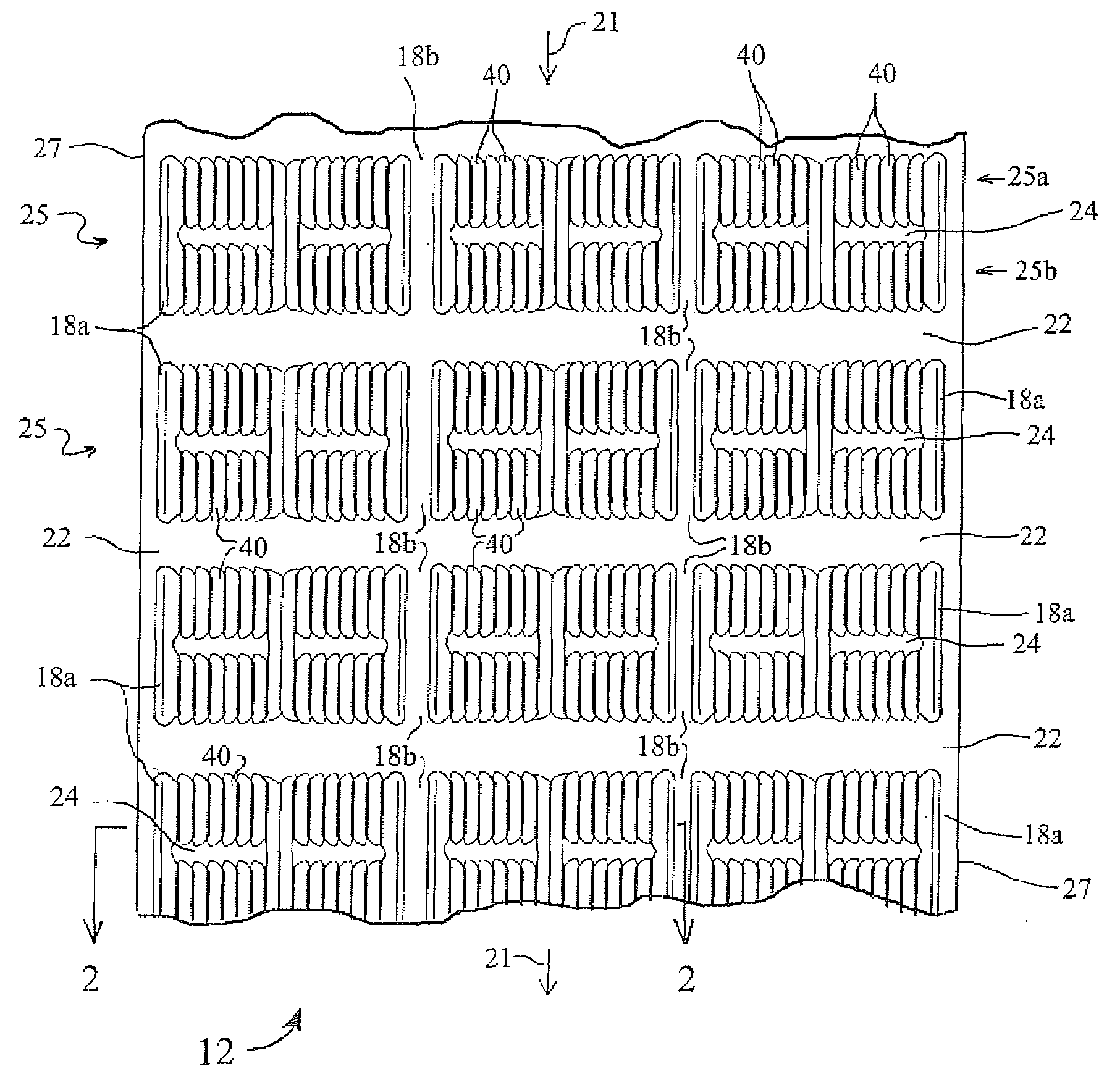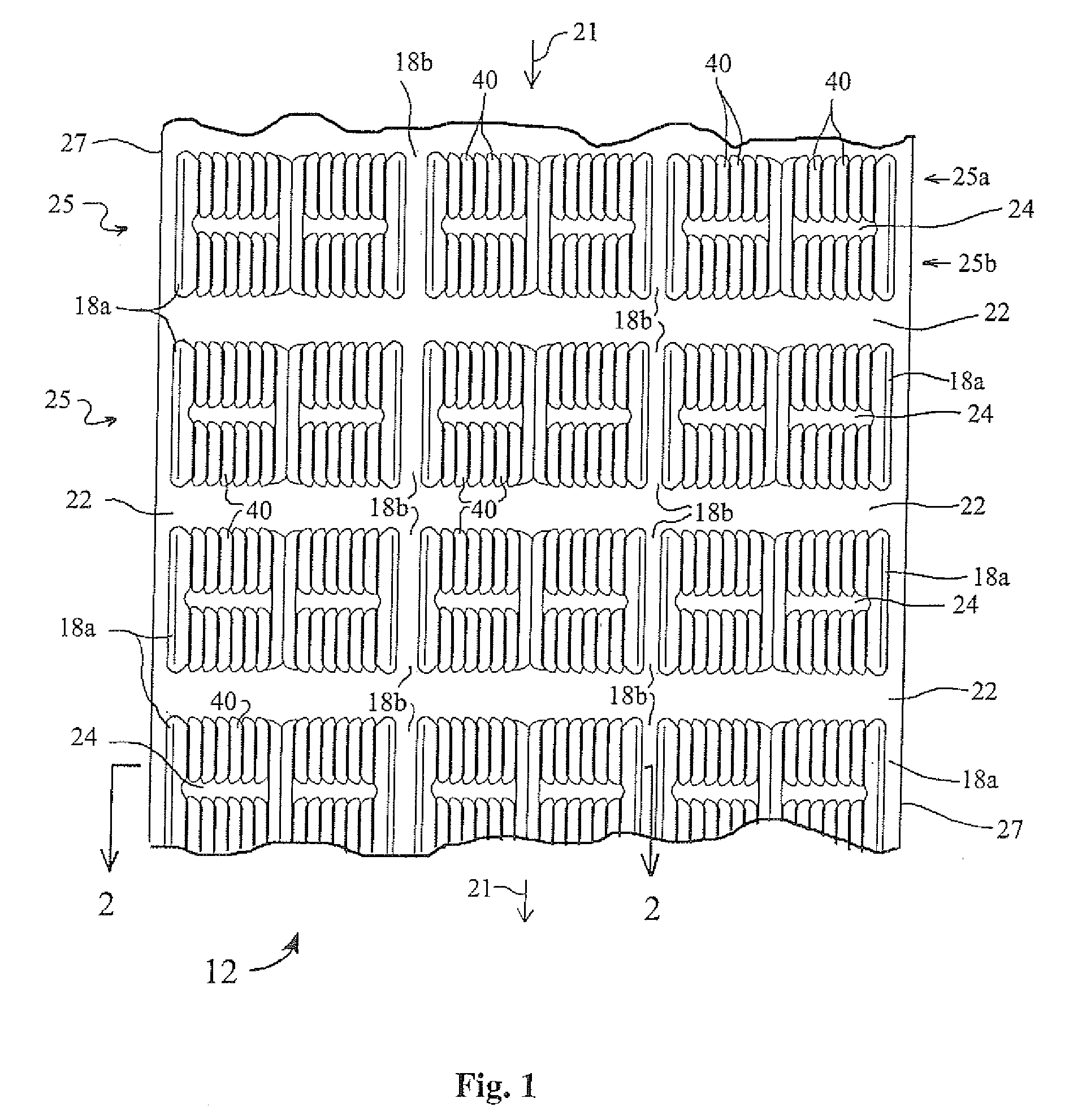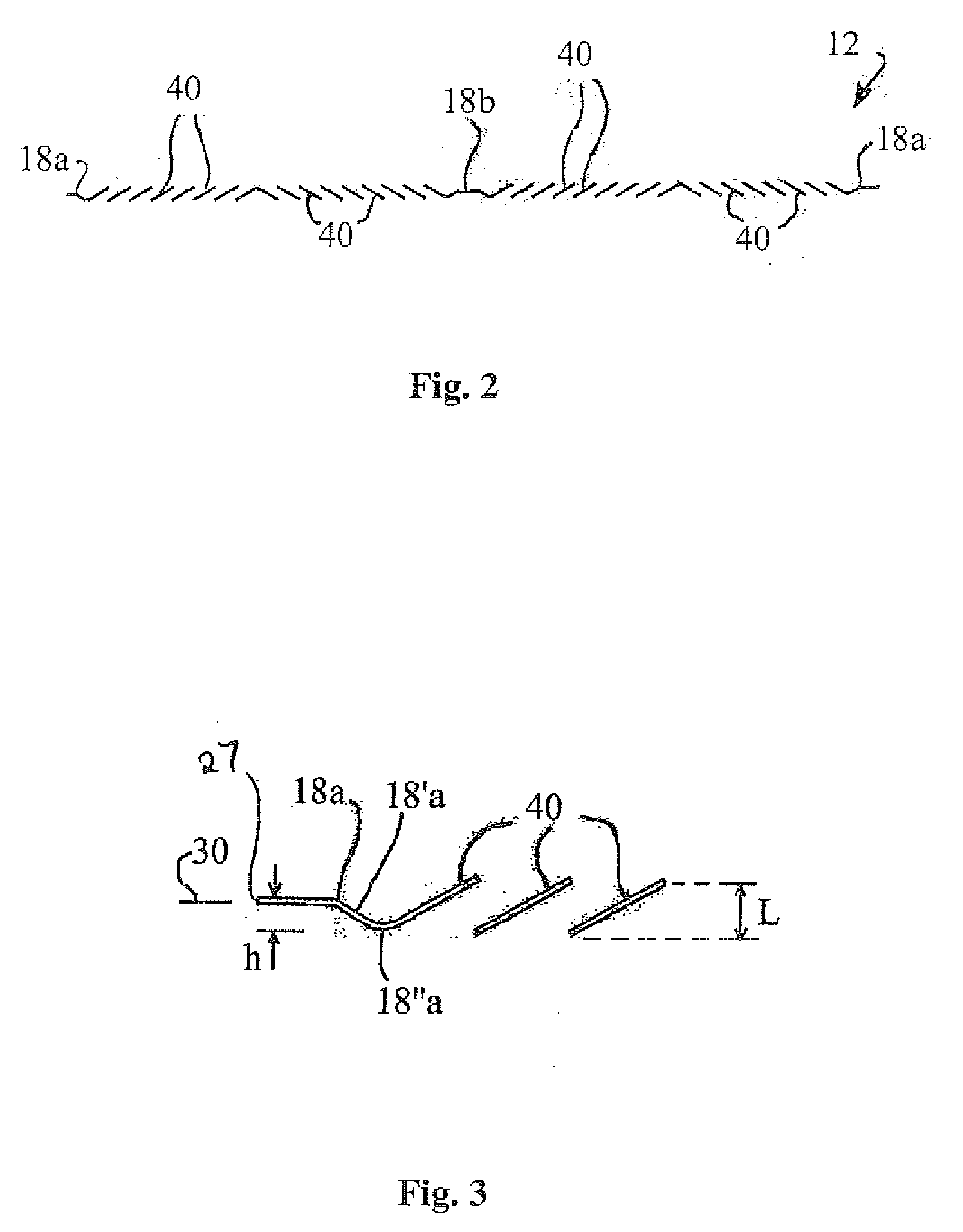Heat exchanger fin with ribbed hem
a heat exchanger and fin technology, applied in the direction of tubular elements, lighting and heating apparatus, stationary conduit assemblies, etc., can solve the problems of serpentine fins being subject to compressive forces and the structural integrity of fins is compromised, so as to reduce the structural integrity of fins and increase structural integrity. , the effect of cost-effectiveness
- Summary
- Abstract
- Description
- Claims
- Application Information
AI Technical Summary
Benefits of technology
Problems solved by technology
Method used
Image
Examples
Embodiment Construction
)
[0039]In describing the preferred embodiment of the present invention, reference will be made herein to FIGS. 1-18 of the drawings in which like numerals refer to like features of the invention.
[0040]FIGS. 1-4 depict a split louver fin configuration formed in a flat metal strip in accordance with the present invention, prior to forming the serpentine convolutions. A length of metal strip 12 of aluminum or preferably copper has split louvers 40 extending in rows 25 across the width of the strip, ribs 18a and 18b formed adjacent the louvers within the rows, and unformed portions 22 extending across the strip width between rows of the louvers. The louvers are formed by cutting the strip and twisting and plastically deforming the cut portions. The opposite ends of each of the louvers maintain connection with the remaining metal strip by a twist portion. Each row 25 of split louvers is made up of a pair of banks 25a, 25b of individual louvers 40, which are separated from each other by u...
PUM
| Property | Measurement | Unit |
|---|---|---|
| angle | aaaaa | aaaaa |
| angle | aaaaa | aaaaa |
| thickness | aaaaa | aaaaa |
Abstract
Description
Claims
Application Information
 Login to View More
Login to View More - R&D
- Intellectual Property
- Life Sciences
- Materials
- Tech Scout
- Unparalleled Data Quality
- Higher Quality Content
- 60% Fewer Hallucinations
Browse by: Latest US Patents, China's latest patents, Technical Efficacy Thesaurus, Application Domain, Technology Topic, Popular Technical Reports.
© 2025 PatSnap. All rights reserved.Legal|Privacy policy|Modern Slavery Act Transparency Statement|Sitemap|About US| Contact US: help@patsnap.com



